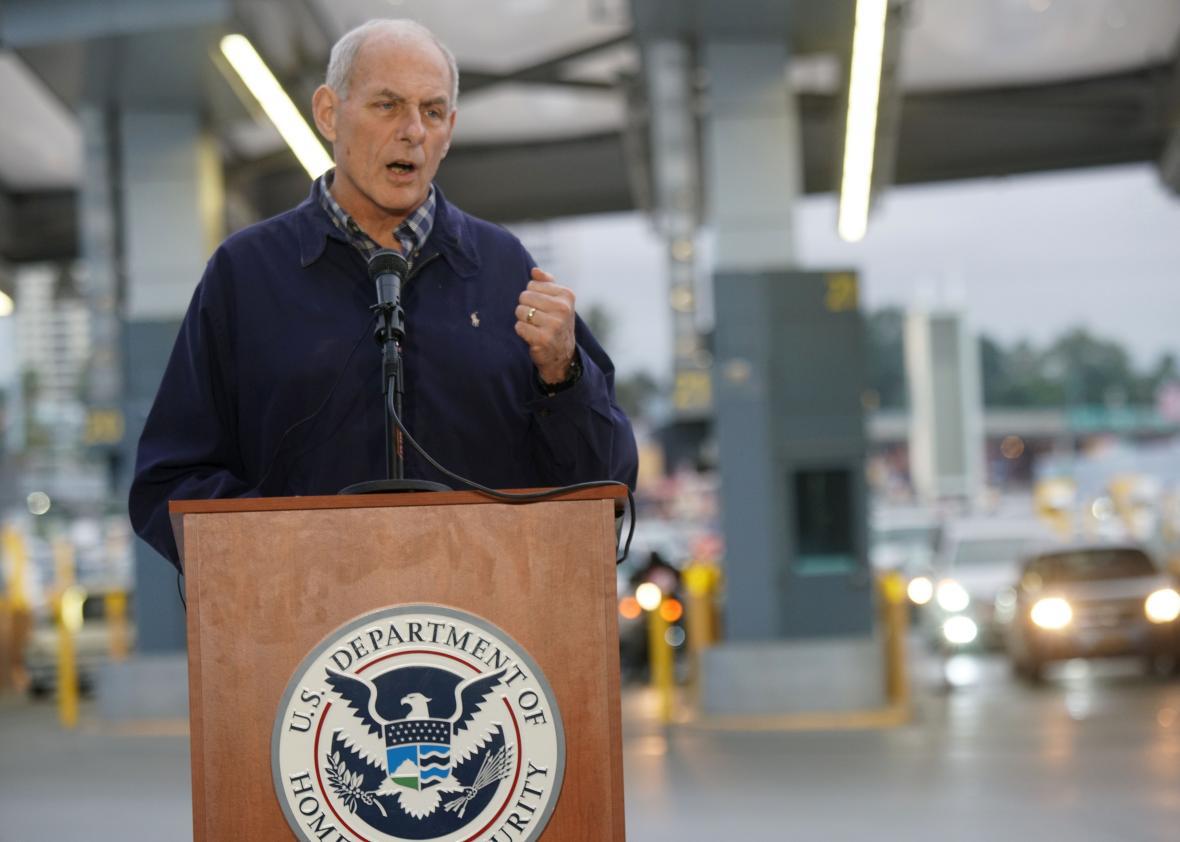On Tuesday, the Department of Homeland Security officially released two memos, first reported by McClatchy and others on Saturday, that outline the Trump administration’s strategy for deporting undocumented immigrants and other aliens with criminal records.
To a large extent, the memos detail how the department will enforce Trump’s omnibus executive order on immigration, signed on Jan. 25, that promised to defund sanctuary cities, deputize local law enforcement as immigration police, and hire thousands of new agents for Border Patrol and Immigration and Customs Enforcement. While there are only 6,000 ICE agents in the field, there are more than 700,000 local police around the country. Together, those actions may create an effective “deportation force,” with or without the participation of the National Guard.
The memos also cement the broadened enforcement priorities that Trump outlined in his order. Under Obama, ICE had moved to limit its deportation focus to only convicted criminals, terrorist threats, and very recent arrivals. (Though many criminal aliens are guilty of nonviolent offenses like working with a false Social Security number, driving without a license, or marijuana possession.) The new DHS rules make all aliens without valid visas a priority for removal, though a DHS official told reporters on Tuesday the department would still focus its limited resources on those who have committed “serious crimes.”
Still, the combination of renewed agreements with local police and sheriffs, an expanded federal immigration police force, and priorities that give leeway to the judgment of immigration officers, sets the stage for an unprecedented crackdown on undocumented residents and likely a huge spike in deportations.
One problem with that is that ICE doesn’t have room to hold all those people before they can have their hearings. (That’s one reason city police and county sheriffs wind up handling detainer requests for ICE.) The department has added 1,100 beds and says it will seek contractors for additional detainment centers, particularly near the Mexican border.
The memos would also allow ICE to more quickly deport recently arrived undocumented immigrants, including those who have been in the country for up to two years. Under Obama, that expedited removal policy was limited to immigrants who had arrived within the past two weeks or were picked up within 100 miles of the border.
Immigrants could be deported to Mexico regardless of their country of origin, if they had entered through Mexico, and in advance of their deportation hearing—making it harder for them to obtain legal counsel as they awaited their hearing from across the border. To stem the tide of unaccompanied minors seeking refuge from violence in Central America, the policy would make parents in the U.S. subject to prosecution and removal if they attempt to bring their children across the border.
The memos also lay out new steps for sharing information with the public. They create the Victims of Immigration Crime Engagement Office, or VOICE, to establish a link between ICE and victims of crimes committed by immigrants. (That may be the section of DHS that takes on the immigrant crime blotter proposed in Trump’s executive order. Also, undocumented immigrants commit fewer crimes than American citizens.) The DHS would also publicize a list of all immigrants released by local “sanctuary” jurisdictions in spite of detainer requests, with information about their arrests.
The CBP is also conducting an analysis of where Trump’s border wall can begin construction, and claims it has identified funding to do so.
The order does not indicate how many people will be deported; to some extent, that depends on the ability of DHS to effectively expand its supply of field agents, both through hiring and through cooperation with local police. What it has already done, though, is create a culture of fear among the nation’s estimated 11 million undocumented immigrants.
